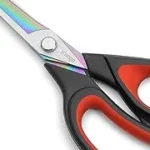Carbon fiber, a lightweight and incredibly strong material, has become increasingly popular in various industries, from aerospace to automotive. However, one question often arises: why is carbon fiber so expensive? The answer lies in its complex manufacturing process and the high cost of raw materials.
To understand the cost of carbon fiber, it is essential to delve into its production. Carbon fiber is created by weaving together thousands of carbon filaments, which are then combined with a resin to form a composite material. This intricate process requires specialized machinery and skilled labor, driving up the production costs significantly.
Moreover, the cost of raw materials plays a crucial role in the high price tag of carbon fiber. The carbon filaments used in its production are made from a precursor material, typically polyacrylonitrile (PAN) or pitch. These precursors are expensive to produce, and their scarcity contributes to the overall cost of carbon fiber.
In conclusion, the steep price of carbon fiber can be attributed to both the intricate manufacturing process and the high cost of raw materials. Despite its hefty price tag, carbon fiber’s exceptional strength and lightweight properties make it a valuable material for industries demanding high-performance products.
What is carbon fiber?
Carbon fiber is a lightweight and incredibly strong material that is made up of thin fibers composed mostly of carbon atoms. These fibers are tightly woven together to form a composite material that is known for its excellent strength-to-weight ratio. Carbon fiber is widely used in industries such as aerospace, automotive, and sporting goods due to its exceptional properties, including high tensile strength, stiffness, and low thermal expansion.
Carbon fiber is produced through a complex manufacturing process. It starts with the creation of a precursor material, usually made of polyacrylonitrile (PAN) or pitch, which is then heated and treated to eliminate impurities and increase carbon content. The resulting material is then spun into fibers, which can be further processed and treated to enhance their properties. Finally, these fibers are woven into a fabric or combined with a matrix material, such as epoxy resin, to create carbon fiber composites.
Why is carbon fiber so expensive?
There are several factors that contribute to the high cost of carbon fiber. Firstly, the production process of carbon fiber requires sophisticated and energy-intensive equipment, which increases manufacturing costs. The raw materials used, such as PAN or pitch, are also relatively expensive, further driving up the overall cost.
Moreover, carbon fiber production involves multiple steps, from the precursor material creation to the final weaving or composite formation. Each step requires careful control and quality assurance to ensure the desired characteristics of the carbon fiber. This adds complexity and time to the manufacturing process, contributing to the overall expense.
Additionally, the demand for carbon fiber is relatively high compared to its supply. The limited production capacity of carbon fiber manufacturers and the specific expertise required to produce high-quality carbon fiber contribute to its scarcity and, consequently, its high price. As technology advances and production methods improve, it is expected that the cost of carbon fiber will gradually decrease, making it more accessible in various industries.
WHY is Carbon Fiber so Insanely EXPENSIVE??
In conclusion, the high cost of carbon fiber can be attributed to several factors. Firstly, the complex manufacturing process involved in producing carbon fiber contributes significantly to its expensive price tag. The intricate process includes heating and stretching polymer fibers, followed by a lengthy curing and cooling process. This level of precision and attention to detail requires advanced technology and skilled labor, both of which come at a cost.
Secondly, the raw materials used to make carbon fiber, such as petroleum-based polymers, are expensive themselves. These materials undergo extensive processing and treatment to transform them into the lightweight, high-strength carbon fiber we know today. Additionally, the demand for carbon fiber has been increasing across various industries, which further drives up the price due to supply and demand dynamics.
Lastly, the limited availability of carbon fiber production facilities is also a contributing factor to its high cost. Companies that produce carbon fiber often invest heavily in specialized equipment and facilities, which limits the number of manufacturers and keeps the competition relatively low. This lack of competition allows manufacturers to maintain higher prices, as they have a greater control over the market.
In summary, the high cost of carbon fiber can be attributed to the complex manufacturing process, expensive raw materials, and limited availability of production facilities. Despite its price, carbon fiber’s exceptional strength-to-weight ratio and durability make it a sought-after material in various industries, including aerospace, automotive, and sports. As technology advances and demand continues to rise, it is possible that the cost of carbon fiber may decrease in the future, making it more accessible to a wider range of applications.






